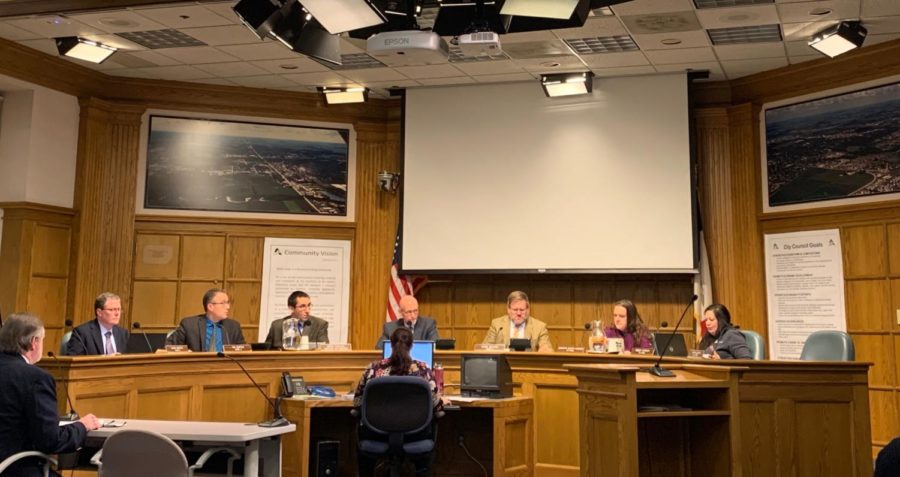Ames City Council to hear arguments on new aquatic center location
Amber Mohmand/Iowa State Daily
Ames City Council discussed ordinances regarding massage establishments and options to change the name of Squaw Creek at their meeting Nov. 26.
Conversations regarding the location of the new aquatic center have vacillated between two sites since the revelation of contamination found at the initially proposed site.
The initial site, which was on a portion of the Iowa Department of Transportation’s land and dubbed the IDOT site, was found to have contaminates, which raised concerns among community members and council members alike. After deciding between multiple sites, the Council has narrowed it between the IDOT site and a site near O’Neal Park.
That notion is further emboldened by a memo written to the mayor and council by Ames City Manager Steven Schainker, in which he states, “I realize the selection of the site for the new indoor aquatic center is one of the most difficult decisions that this City Council has been asked to make.”
According to the Council’s meeting agenda, some of the pros for selecting the IDOT site include:
- After originally consulting with the neighborhood residents for the proposed site, they had no major opposition to the site.
- Once the contract to purchase land from IDOT is finalized, the architect and construction manager can be hired and begin design immediately.
- The center could potentially receive up to $10 million from sales and hotel/motel tax revenues from the state to offset debt service payment.
- Selection of the site allows the city to complete the project quicker than pursuing any other site.
- A number of the individuals who have pledged donations for the indoor aquatic center have expressed a desire that the city moves ahead with the IDOT site.
Some of the cons include:
- There will always be the perception among some citizens that the site remains contaminated and poses a continued health threat to users.
- The city will be responsible for all remediation and construction costs to protect the site with no indication at this time regarding the total amount of, or cap on, the city’s financial obligation to accomplish these responsibilities.
- In order to satisfy concerns about the safety of the site, on-going expenses may be required for monitoring groundwater.
- While there is the possibility of seeking federal grant funding for cleaning up the site, the grant program involves a competitive application process that could take a significant amount of time before funding decisions are made, and the city must first acquire the site to qualify.
For the O’Neil Park site, some pros include:
- A greater likelihood that the walking track and multipurpose room addition can be financed within the current budget since the $2.9 million land acquisition cost will not be required.
- This site is similar in size to the IDOT site, so it should be able to accommodate the same facilities planned for the IDOT site.
Some of the cons include:
- There has been strong citizen opposition regarding the construction of the aquatics center at O’Neil Park.
- A number of the individuals who have pledged donations for the indoor aquatic center have expressed opposition to the O’Neil site.
- Testing is required to confirm that the site has no contamination.
Schainker, in his memo to the mayor and council, emphasized that the pro and cons list, along with other attached supplemental information in regard to the decision of the site, do not reflect every issue raised over the sites, but that they reflect some of the most significant issues.
The council will also address the development of a new hangar at the Ames Municipal Airport, among a slew of other topics at their meeting Tuesday at 6 p.m. A livestream of the meeting can be found on the Ames Television YouTube channel.
Your donation will support the student journalists of the Iowa State Daily. Your contribution will allow us to purchase equipment, send our student journalists to conferences and off-set their cost of living so they can continue to do best-in-the-nation work at the Iowa State Daily.












